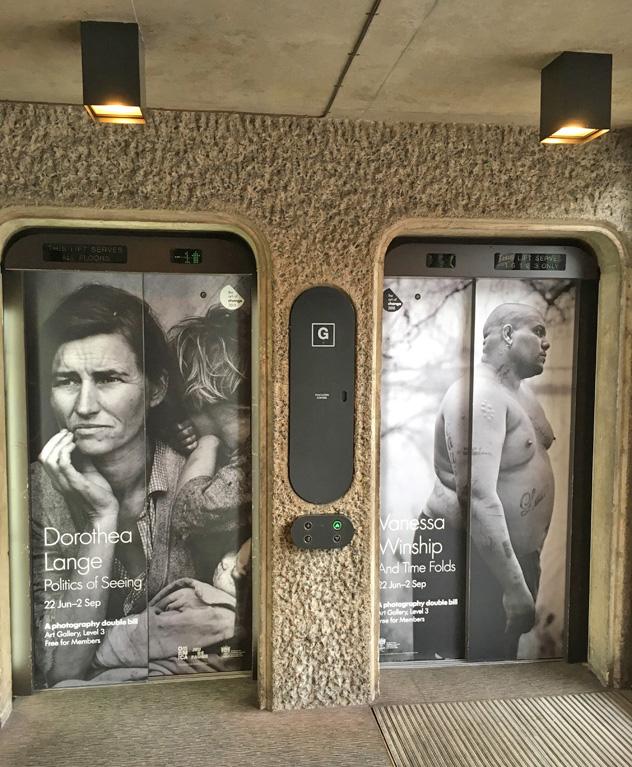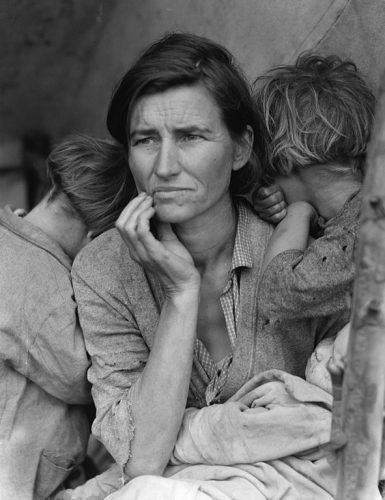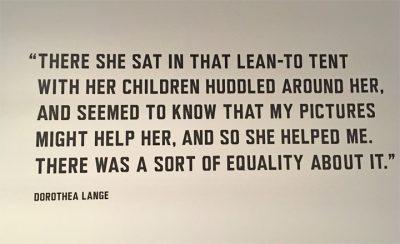I was excited to go to the Barbican exhibitions of Dorothea Lange and Vanessa Winship‘s photography.
But what I found out is the Politics of Seeing can be just as rotten as any other Politics.
Lange has been described as “principled .., a heroine of the lens“. After her most famous photo, Migrant Mother, was published and syndicated: “within days the federal government had rushed tons of aid to the camp [where the photo was taken]. Through the free distribution of her picture – always her policy – Lange put food in the pea-pickers’ mouths.”
So the Politics of Seeing look good, don’t they?
I’m not so sure. When I saw the exhibition, and specifically ‘Migrant Mother’ with the ‘explanation’ here below, I was much less impressed.
The idea of any ‘equality’ just didn’t ring true to me.
One of the wonders of the internet is how easy it is to look for more information. The back-story here has some obvious inconsistencies. But it certainly feels truer than any ‘equality’.
The woman in the photo, Florence Thompson, had a husband who died of TB when she was pregnant with her sixth child, leaving her with no supportive family: “During cotton harvests … [Mrs Thompson] would put her babies in bags and carry them along with her as she worked down the rows. She earned 50 cents per hundred pounds picked and … generally picked around 450, 500 [pounds a day]. [She herself] didn’t even weigh a hundred pounds.” For a while, she and her children lived under a bridge: “When Steinbeck wrote in The Grapes of Wrath about those people living under the bridge at Bakersfield — at one time we lived under that bridge. It was the same story. Didn’t even have a tent then, just a ratty old quilt.”
In 1936, after Thompson’s car broke down one day, she managed to get it towed into the Nipomo pea-pickers camp, had it repaired, and was just about to leave when Dorothea Lange appeared:
“Thompson was not eager to have her family photographed and exhibited as specimens of poverty, but there were people starving in that camp… and Dorothea Lange convinced her that the image would educate the public about the plight of hardworking but poor people like herself.”
Mrs Thompson did not personally benefit from her photo then or later: “by the time the photo appeared in a local newspaper, [she and] her family had moved on to the next town.”
She had “one of the most famous faces in the United States”. But to keep her family together, she had to work 16 hours a day, seven days a week. And not just for a few years: “I done a little bit of everything to make a living for my kids.”
In contrast, Migrant Mother “made Dorothea Lange’s reputation, helped earn her a Guggenheim fellowship, and conferred fame and a permanent place in the canon of American photographers.”
What does it say about the ‘Politics of Seeing’ that Migrant Mother, “one of the most successful photographs in American history, should have helped so many, but done nothing for the woman whose face and body were able to express so much”?
Thompson “was posing, and she knew why. She was to represent the very Figure of Poverty. So she organised her posture and set her expression just so for Lange’s camera.”
If this is the ‘Politics of Seeing’, then I think it sucks.


